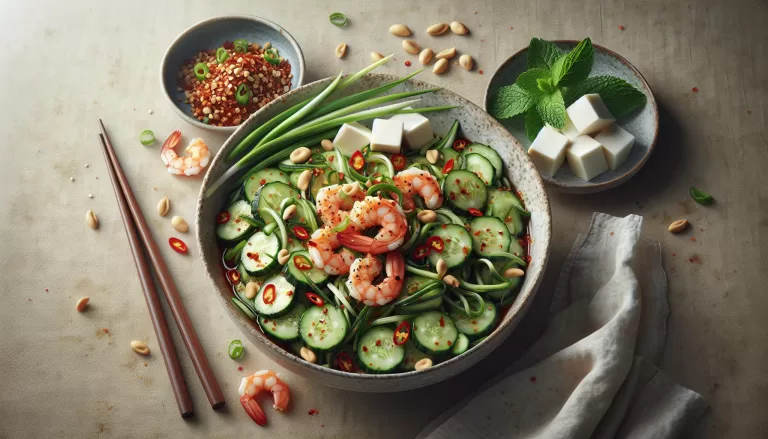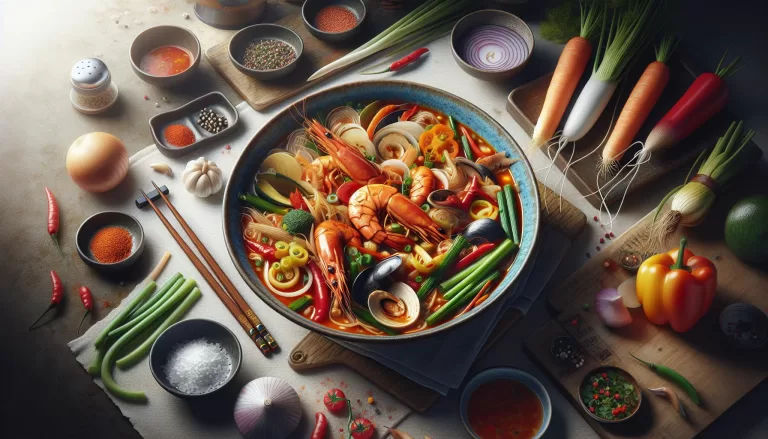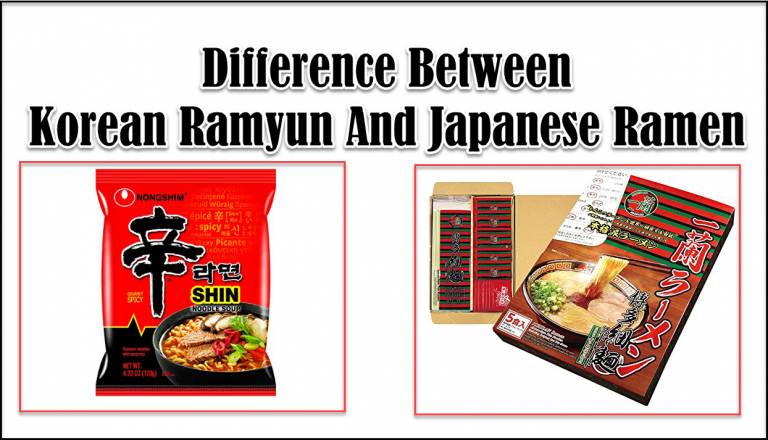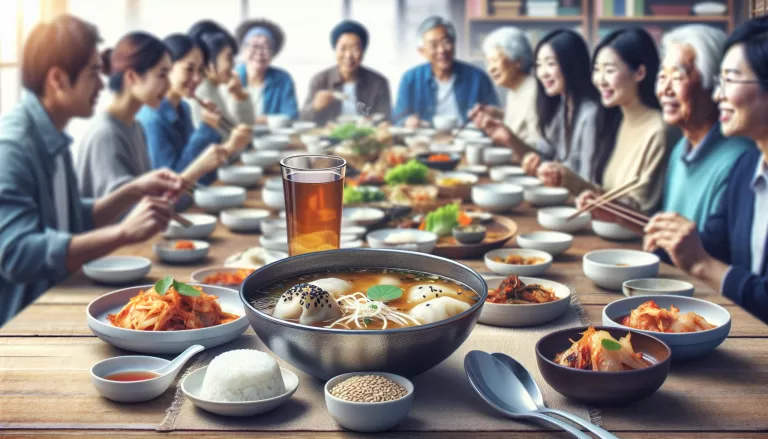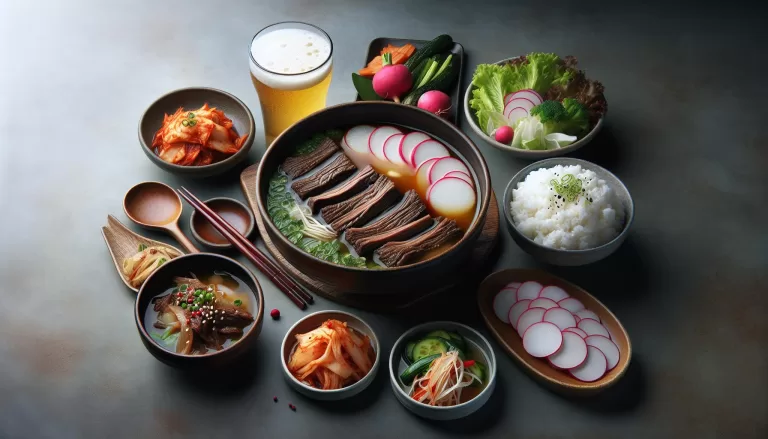Mastering Your Homemade Haemul Pajeon Recipe – Personalized Korean Seafood Pancakes

Ingredients for Homemade Haemul Pajeon
Venturing into the realm of Korean cuisine with haemul pajeon, you’ll need a specific set of ingredients. Fresh seafood and green onions are at the core of this savory pancake. Now, let’s break it down.
For your haemul pajeon, you’ll need:
- Approximately 1 cup of mixed seafood – typically squid, clams, prawns, but this versatile dish lends itself beautifully to your preferred seafood choices.
- A generous handful (about 10 strands) of green onions, sliced long ways – these not only add flavor but also create a visually appealing dish with their vibrant color.
- About 3/4 cups of Korean pancake mix (Pajeon mix) – if you don’t have this, an easy substitute is to use general purpose flour coupled with a touch of cornstarch for added crispiness.
To add that extra depth to the dish, you will also need few more elements:
- 1 large egg
- 1.5 cups of icy cold water
- Pinch of salt to taste
- 2 tablespoons of vegetable oil for frying
What about dipping sauce? For a well-rounded flavor pairing, add ingredients like soy sauce, sesame oil, vinegar, and a hint of red pepper flakes for spice.
It’s not just about taste! There’s some substantial nutritional value in a serving of haemul pajeon. For a single serving (1/4 of the pancake):
| Nutrient | Amount |
|---|---|
| Calories | 384 |
| Carbs | 63g |
| Protein | 10g |
| Fat | 11g |
There you have it! A list of all the ingredients needed to craft a delicious homemade haemul pajeon. It’s more than just a pancake, it’s a gateway to the heart of Korean cuisine! As you embark on this culinary journey, remember, the freshness of your ingredients significantly contributes to the final outcome. Enjoy the process and seeing your masterpiece come to life in the kitchen.
Step-by-Step Instructions
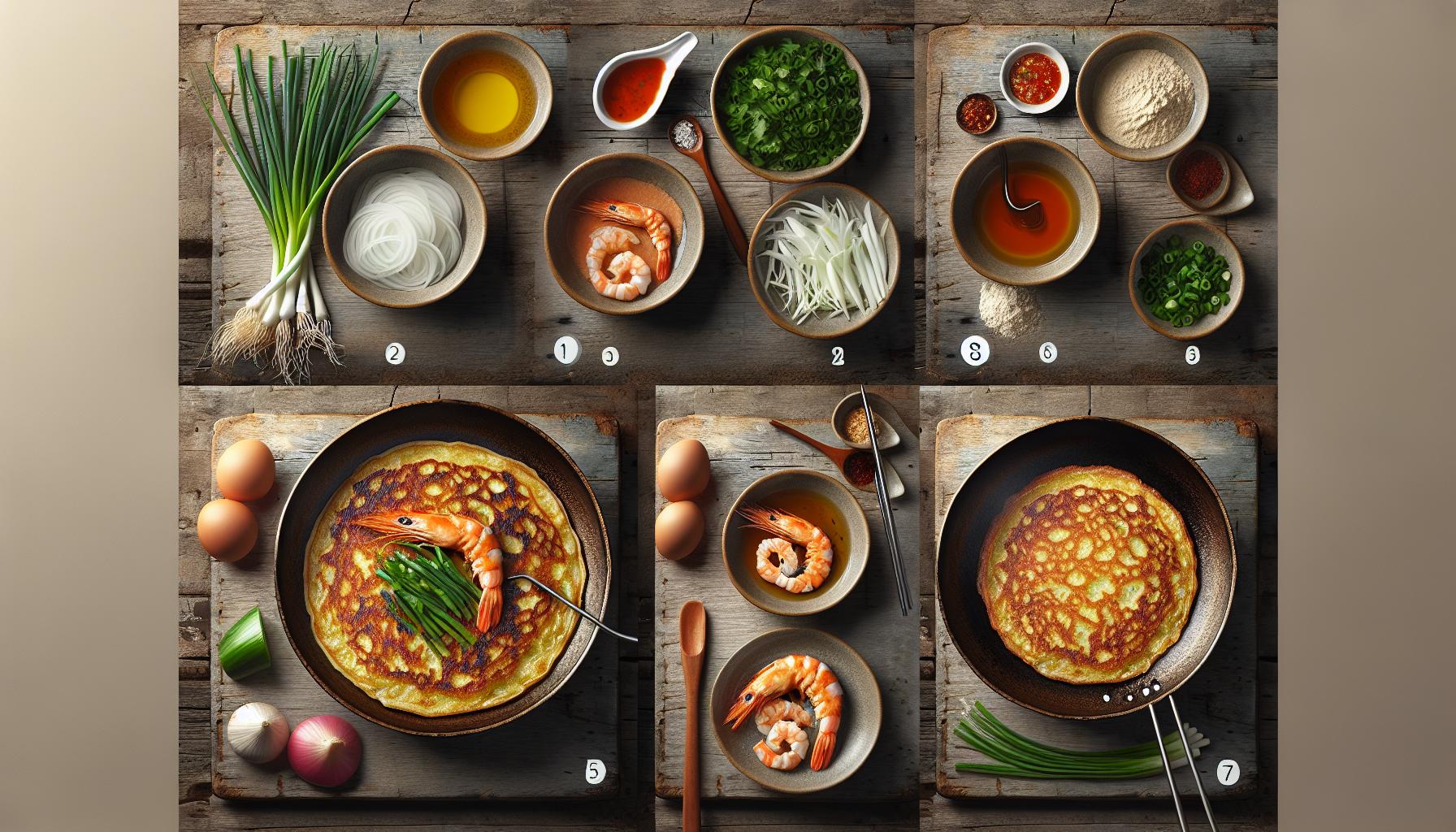
Alright, let’s get cooking your homemade haemul pajeon with these step-by-step instructions.
To start, thouroughly clean your mixed seafood under cold water. Freshness is key here so make sure you have chosen quality products. After a good rinse, pat the seafood dry and set it aside.
Next, grab a large bowl and begin adding your ingredients. Add your Korean pancake mix. If you can’t find one in your local store, all-purpose flour mixed with rice flour works as well. Toss in a pinch of salt for flavor. Proceed with mixing in the cold water, stirring consistently to ensure you get a smooth batter. Here’s a tip: Keep the batter on the thicker side. It’s better for keeping the ingredients together when cooking.
Afterward, fold in the green onions and the seafood into the mix. The key is not over mixing – a few gentle stirs should suffice.
Heat up a non-stick pan over medium heat and pour in some vegetable oil. Once the oil is hot, ladle in your batter and flatten it out like a pancake. Cook until it’s golden brown, then flip and repeat on the other side.
While waiting, you can begin preparing your flavorful dipping sauce. Combine soy sauce, sesame oil, vinegar, and red pepper flakes in a bowl. Stir well. Keep in mind, adjust the red pepper flakes to your preferred level of spice.
Finally, whisk up an egg in a bowl. You’ll lightly coat the top of your pancake with this egg mixture then flip it back onto the pan for a final cook.
For a bit of nutritional knowledge, a single serving of your homemade haemul pajeon usually contains the following content:
| Nutrients | Amount (per serving) |
|---|---|
| Calories | 300 |
| Carbs | 40g |
| Protein | 15g |
| Fat | 10g |
Tips for the Perfect Haemul Pajeon
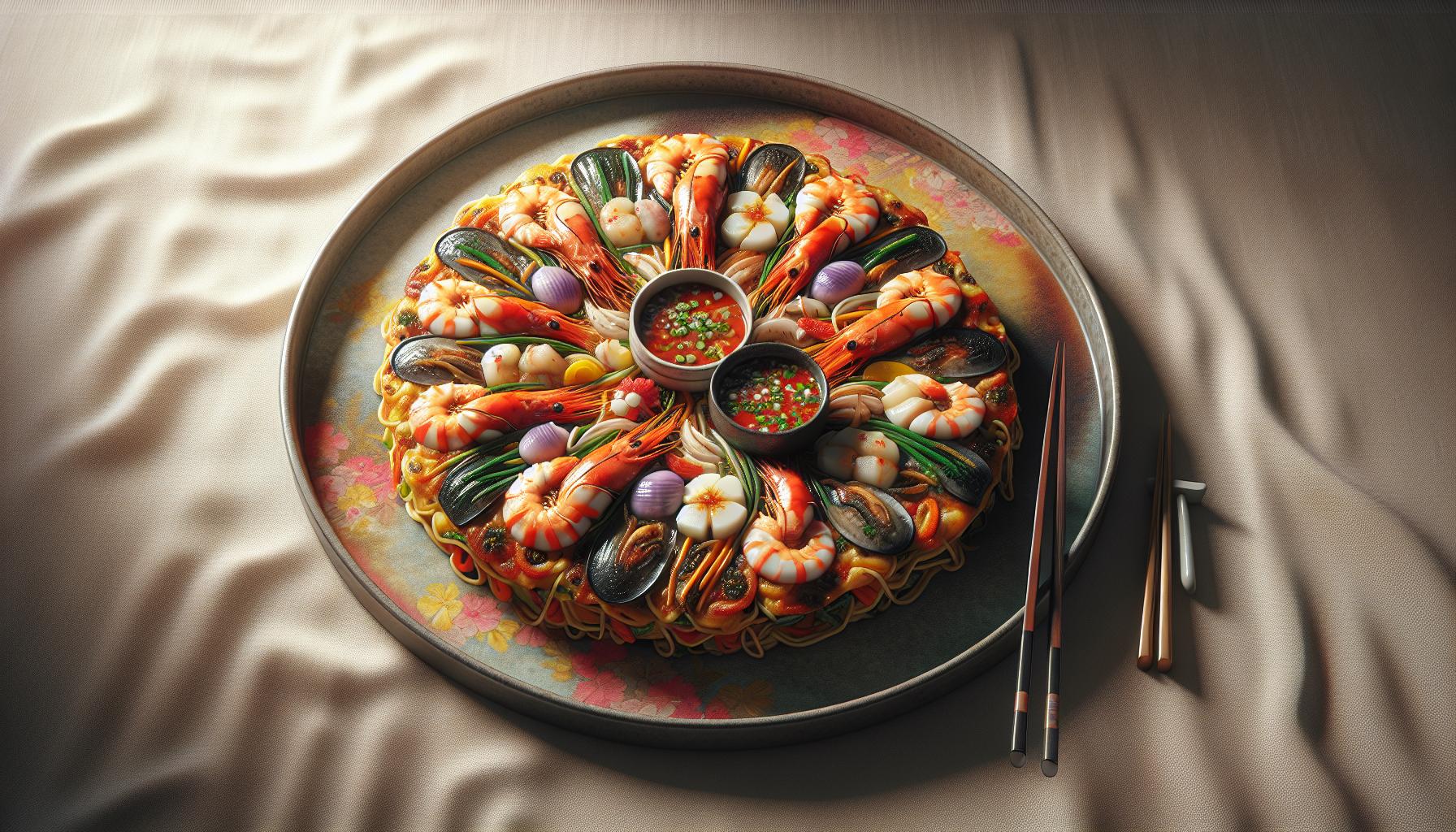
Creating the perfect haemul pajeon at home is not as daunting as it may seem! You just need to follow some key tips.
Always Use the Freshest Seafood
Nothing affects the taste of your haemul pajeon more than the freshness of your seafood. Try to source fresh, local seafood whenever possible. Freshness intensifies flavors and maximizes the dish’s overall impact.
Experiment with Batter Consistency
Everyone has their preference when it comes to batter consistency. Some like it thick, others prefer it light. Don’t shy away from trying different ratios of flour to water in your batter prep.
Here’s a little table to guide you:
| Ingredient | Thick Batter Ratio | Light Batter Ratio |
|---|---|---|
| Flour | 1 cup | 0.75 cup |
| Water | 0.75 cup | 1 cup |
Get Creative with Toppings
Add your personal touch to the classic haemul pajeon recipe by introducing your favorite ingredients. Try sprinkling some fresh herbs, or give a hint of heat with a dash of chili flakes!
Nutrition
Keep in mind the nutritional value of haemul pajeon as well. Here’s a quick rundown:
| Nutrient | Per Serving |
|---|---|
| Calories | 300 |
| Carbs | 40g |
| Protein | 15g |
| Fat | 10g |
Remember, these values might alter according to your recipe modifications and portion sizes. Ingredient choices and cooking methods can make a difference too. If nutrition is a key concern, consider substituting some ingredients for healthier alternatives.
Serving and Enjoying Your Haemul Pajeon
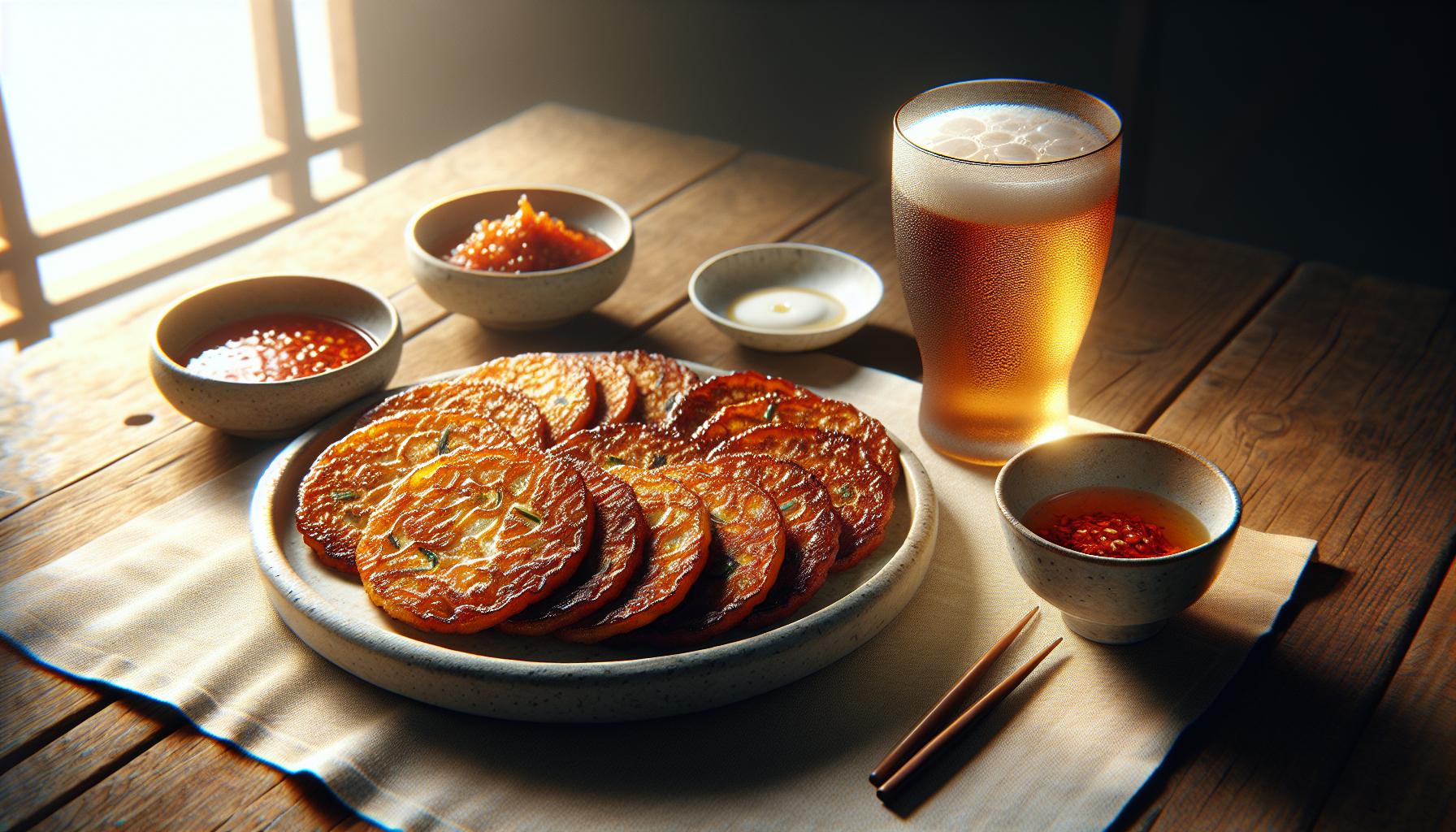
After spending time crafting the perfect haemul pajeon, it’s crucial to know how to serve and enjoy it. The right presentation not only enhances your dining experience but also pays homage to this classic Korean dish’s rich cultural and culinary heritage.
Traditionally, haemul pajeon is served warm. This ensures that the crunchy exterior and soft, flavorful interior are at their peak. So, remember to heat your pan properly before cooking. However, be careful not to overheat it as it could lead to an unevenly cooked pajeon – you want an even, golden-brown colour.
In Korea, haemul pajeon is often served with a side of dipping sauce, called cho-gochujang. This tangy, spicy sauce complements the seafood and green onions in your pajeon. Making the sauce is simple: it’s a straightforward blend of soy sauce, vinegar, sugar, and gochujang (Korean chili paste). Eating your pajeon with this dip amplifies the depth of flavors and provides a kick that’s unforgettable.
Let’s talk about beverage pairings. For refreshing contrast, consider pairing your haemul pajeon with a chilled glass of makgeolli, a milky Korean rice wine. If you’re not a fan of alcohol, cold barley tea, or boricha, is another excellent choice.
You may wonder, “Can I customize my haemul pajeon experience?” Absolutely! While the traditional recipe calls for shrimp and squid, feel free to experiment with your preferred seafood. Oysters and clams can add a new dimension to your pajeon. Even vegetarians can enjoy this dish by switching seafood with an assortment of vegetables. The possibilities are endless when it comes to personalizing your pajeon.
And finally, a note on nutrition. Haemul pajeon is relatively high in protein, thanks to the generous seafood serving. However, for a more wholesome eating experience, you can make some simple ingredient swaps. Whole wheat flour or chickpea flour can replace all-purpose flour, and coconut oil can be a healthier cooking medium than regular vegetable oil.
Remember, the art of serving and enjoying haemul pajeon lies in appreciating its traditions while making it your own.
Variations and Customizations

You’re not just cooking, you’re tailoring the haemul pajeon to your palate. And perhaps, stepping outside the culinary box just might spice up your kitchen adventures.
Ever tried swapping out shrimp and squid for clams or mussels? Or how about popping in some fermented kimchi for that flavorful punch? Personalizing your haemul pajeon is not only permitted, but it’s also encouraged.
The beauty of this dish lies in its versatility. Want to pump up the nutritional value? Consider swapping standard white flour for whole wheat or chickpea flour. These alternatives not only boost the protein content but also add unique flavors.
What about oil substitutions? Traditionalists might frown, but there’s no law against deviating! Coconut oil is a fantastic substitute that can provide a pleasant hint of sweetness to contrast the savory elements of your haemul pajeon. If you’re health conscious, olive oil is your friend. It’s loaded with heart health benefits and can still deliver on taste.
For a different texture, why not try using white cornmeal or rice flour. Biting into a slightly crispy, gritty exterior introduces a new experience. It’s all about creating that unforgettable gastronomic journey, right?
For the dipping sauce, venture beyond cho-gochujang and give soy-vinegar or gochujang-mayo a whirl. Going with a non-traditional version? Just remember, it’s all about balance. If your sauce is fiery, keep your pajeon mild. A powerful pajeon could be well-accompanied by a simple, soothing sauce.
While we’re exploring, let’s not confine our pairing options to just makgeolli or barley tea. How about a crisp white wine? Or a robust lager? Think complementary, think contrast, think outside the box!
Dare to play with your food. Experiment with these variations and taste-test your path to your own signature haemul pajeon. Enjoy the process, relish the results. You’re customizing a traditional dish after all!
Conclusion
You’ve now got the know-how to take your homemade haemul pajeon to the next level. Don’t be afraid to shake things up with your choice of seafood or by adding a tangy kick of fermented kimchi. Try out different flours and oils to not only switch up the taste but also boost the health factor. Go for a unique texture with white cornmeal or rice flour. Remember, the dipping sauce and beverage pairing can make or break your dish. So, whether it’s soy-vinegar or gochujang-mayo, white wine or lager, pick what best complements your pajeon. It’s all about personalizing this traditional dish to make it truly yours. So go ahead, experiment, and enjoy the process. After all, the best part about cooking is making a recipe your own. Happy cooking!
